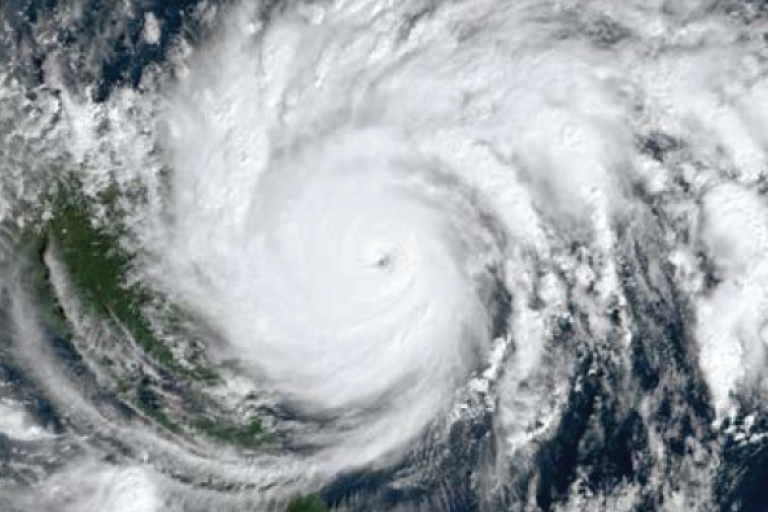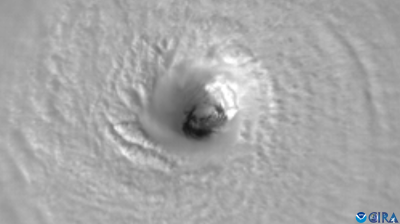NOAA adjusts hurricane season forecast
NOAA’s Climate Prediction Center — a division of the National Weather Service — has increased its prediction for the ongoing 2023 Atlantic hurricane season from a near-normal level of activity to an above-normal level. Current ocean and atmospheric conditions, such as record-warm Atlantic sea surface temperatures, are likely to counterbalance the usually limiting atmospheric conditions associated with the ongoing El Nino event.

NOAA forecasters have increased the likelihood of an above-normal Atlantic hurricane season to 60% (increased from the outlook issued in May, which predicted a 30% chance). The likelihood of near-normal activity has decreased to 25% and there is a 15% chance of a below-normal season.
The update covers the entire six-month hurricane season that ends on Nov. 30. It forecasts 14-21 named storms, of which 6-11 could become hurricanes (winds of 119 kmh/74 mph or greater). Of those, 2-5 could become major hurricanes (category 3 and above, with winds of 178 kmh/111 mph or greater). NOAA provides these ranges with a 70% confidence. These updated ranges include storms that have already formed this season.
The Atlantic basin experienced an active start to the hurricane season with five storms that have reached at least tropical storm strength, including one hurricane already. An average hurricane season produces 14 named storms, of which seven become hurricanes, including three major hurricanes.
“The main climate factors expected to influence the 2023 Atlantic hurricane activity are the ongoing El Nino and the warm phase of the Atlantic Multi-Decadal Oscillation, including record-warm Atlantic sea surface temperatures,” said Matthew Rosencrans, lead hurricane season forecaster with NOAA’s Climate Prediction Center. “Considering those factors, the updated outlook calls for more activity, so we urge everyone to prepare now for the continuing season.”
El Nino conditions are currently being observed. El Nino usually results in atmospheric conditions that help to lessen tropical activity during the Atlantic hurricane season. So far, those limiting conditions have been slow to develop and climate scientists are forecasting that the associated impacts that tend to limit tropical cyclone activity may not be in place for much of the remaining hurricane season.
A below-normal wind shear forecast, slightly below-normal Atlantic trade winds and a near- or above-normal West African Monsoon were also key factors in shaping this updated seasonal forecast.
In total, the 2022 Atlantic hurricane season produced 14 named storms, of which eight became hurricanes and two were major hurricanes (Ian and Fiona). Both 2020 and 2021 were so active that the regular list of rotating names was exhausted. WMO oversees the list of names.

Early Warnings for All
It takes just one landfalling major hurricane to set back years of socio-economic development.
Small Island Developing States suffer disproportionately in terms of both economic impact and the human toll. For instance, Hurricane Maria in 2017 cost Dominica 800% of its Gross Domestic Product.
Between 1970 and 2021 tropical cyclones (the generic term which includes hurricanes) were the leading cause of both reported human and economic losses worldwide, accounting for more than 2 000 disasters.
However, the death toll more than 350,000 in the 1970s to less than 20,000 in 2010-2019. Reported economic losses in 2010-2019 were at 573.2 billion dollars.
“Tropical cyclones are major killers and a single storm can reverse years of socio-economic development. The death toll has fallen dramatically thanks to improvements in forecasting, warning and disaster risk reduction. But we can do even better,” said WMO Secretary-General Prof. Petteri Taalas.
“The UN Early Warnings for All initiative seeks to ensure that everyone has access to warnings of life-threatening winds, storm surge and rainfall in the next five years, especially in Small Island Developing States which are on the frontlines of climate change,” he said.
More information here: https://www.noaa.gov/news-release/noaa-forecasters-increase-atlantic-hurricane-season-prediction-to-above-normal
- WMO Member:
- United States of America










